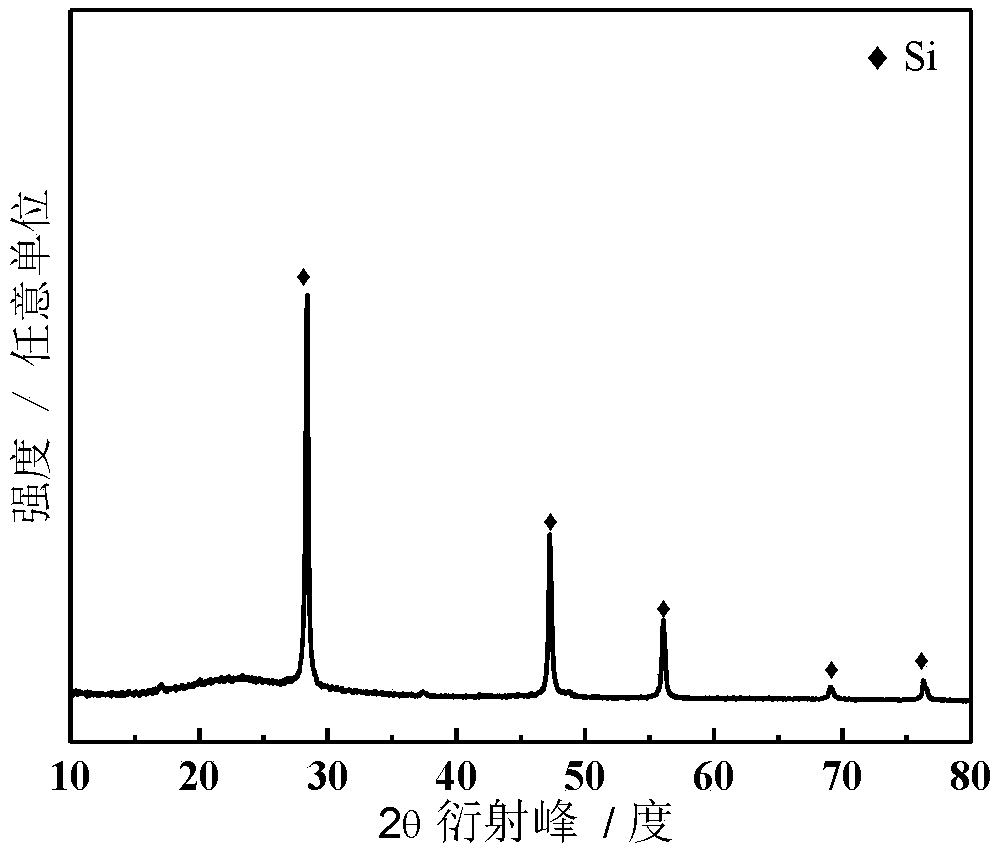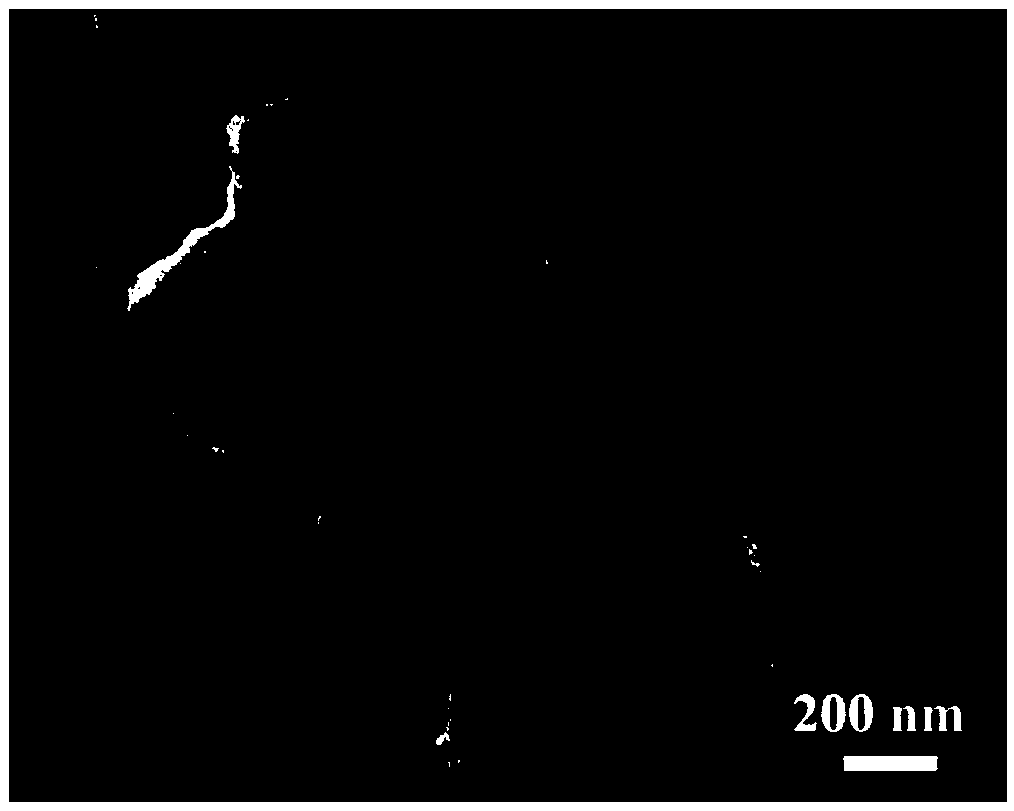Silicon-based anode material and preparation method thereof and application thereof
A silicon-based negative electrode material, nano-silicon technology, applied in battery electrodes, electrical components, electrochemical generators, etc., to achieve the effects of improving cycle stability, low energy consumption, and uniform compounding
- Summary
- Abstract
- Description
- Claims
- Application Information
AI Technical Summary
Problems solved by technology
Method used
Image
Examples
Embodiment 1
[0044] A method for preparing a silicon-based negative electrode material, comprising the following steps:
[0045] 1) First burn diatomite in air at 800°C for 2 hours, then wash the burnt product with 6mol / L hydrochloric acid for 12 hours, and wash it with deionized water until neutral to obtain pure silicon oxide;
[0046] 2) The pure silicon oxide prepared in step 1) is mixed with magnesium powder and sodium chloride through ball milling, the ball milling speed is 180r / min, and the ball milling time is 10 hours to obtain a mixture; the mol ratio of magnesium powder to pure silicon oxide is 2: 1. The weight ratio of sodium chloride to pure silicon oxide is 6:1;
[0047]3) The mixture prepared in step 2) is placed in a tube furnace, and argon gas is introduced to carry out a magnesia thermal reduction reaction with a reaction temperature of 800° C. and a reaction time of 10 hours; to obtain a magnesia thermal reaction product;
[0048] 4) The magnesium thermal reaction produ...
Embodiment 2
[0062] A method for preparing a silicon-based negative electrode material, comprising the following steps:
[0063] 1) First burn kaolin in air at 800°C for 2 hours, then wash the burnt product with 6mol / L hydrochloric acid for 12 hours, and wash it with deionized water until neutral to obtain pure silicon oxide;
[0064] 2) The pure silicon oxide prepared in step 1) is mixed with aluminum powder and potassium chloride through ball milling, the ball milling speed is 180r / min, and the ball milling time is 10 hours to obtain a mixture; the mol ratio of aluminum powder to pure silicon oxide is 4.0: 3. The weight ratio of potassium chloride to pure silicon oxide is 7:1;
[0065] 3) placing the mixture prepared in step 2) in a tube furnace, feeding argon gas, and performing a magnesia thermal reduction reaction, the reaction temperature is 850°C, and the reaction time is 5 hours; a magnesia thermal reaction product is obtained;
[0066] 4) The magnesium thermal reaction product pr...
Embodiment 3
[0072] A method for preparing a silicon-based negative electrode material, comprising the following steps:
[0073] 1) Burn the quartz sand in the air at 800°C for 2 hours, then wash the burnt product with 6mol / L hydrochloric acid for 12 hours, and wash it with deionized water until neutral to obtain pure silica;
[0074] 2) The pure silicon oxide prepared in step 1) is mixed with magnesium powder and magnesium chloride through ball milling, the ball milling speed is 180r / min, and the ball milling time is 10 hours to obtain a mixture; the molar ratio of magnesium powder to pure silicon oxide is 2.1:1, The weight ratio of magnesium chloride to pure silicon oxide is 9:1;
[0075] 3) The mixture prepared in step 2) is placed in a tube furnace, and argon gas is introduced to carry out a magnesia thermal reduction reaction with a reaction temperature of 750° C. and a reaction time of 15 hours; a magnesia thermal reaction product is obtained;
[0076] 4) The magnesium thermal react...
PUM
| Property | Measurement | Unit |
|---|---|---|
| Size | aaaaa | aaaaa |
| Discharge capacity | aaaaa | aaaaa |
Abstract
Description
Claims
Application Information
 Login to View More
Login to View More - R&D
- Intellectual Property
- Life Sciences
- Materials
- Tech Scout
- Unparalleled Data Quality
- Higher Quality Content
- 60% Fewer Hallucinations
Browse by: Latest US Patents, China's latest patents, Technical Efficacy Thesaurus, Application Domain, Technology Topic, Popular Technical Reports.
© 2025 PatSnap. All rights reserved.Legal|Privacy policy|Modern Slavery Act Transparency Statement|Sitemap|About US| Contact US: help@patsnap.com



